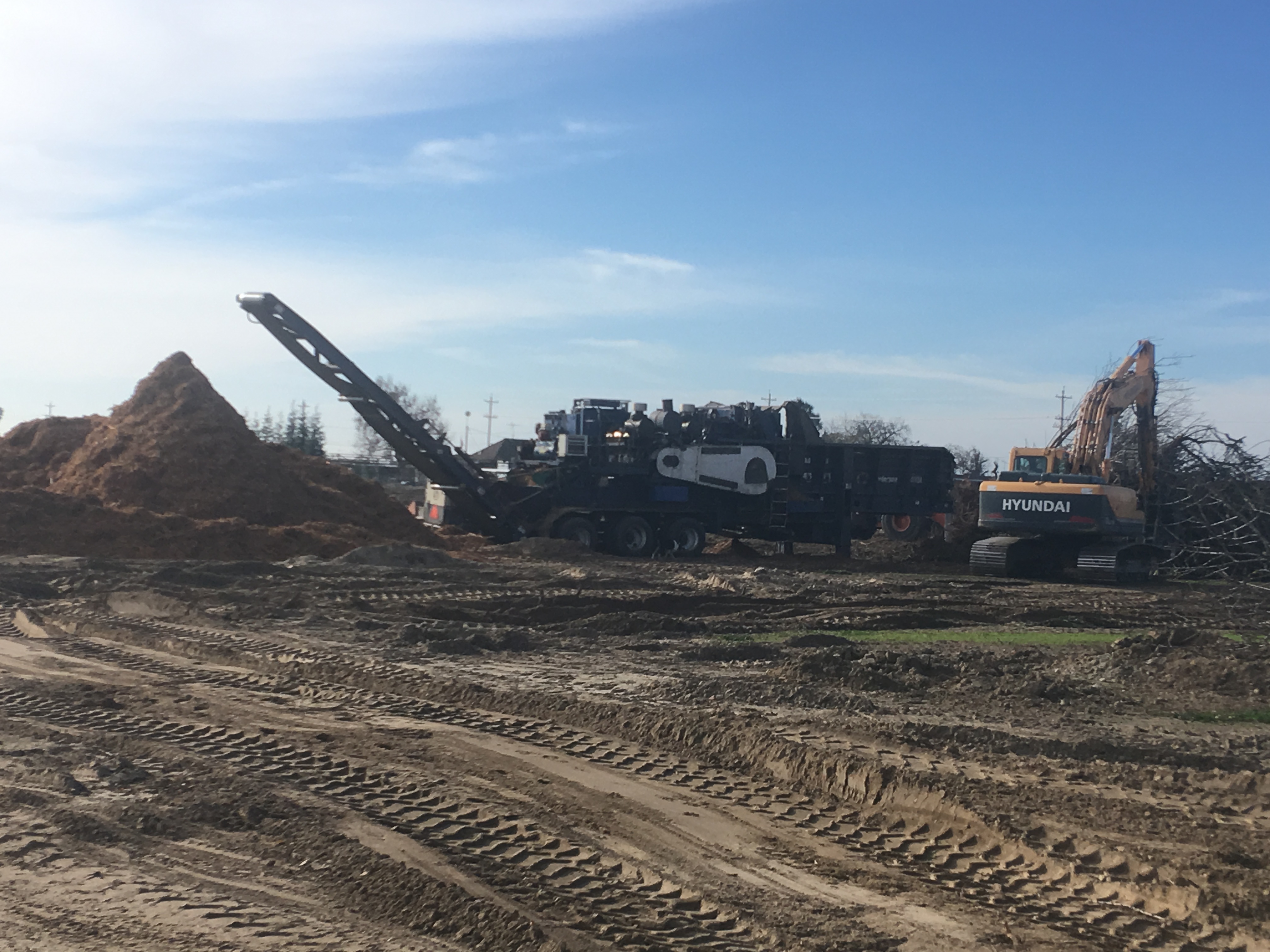Harvest is nearing its end and with it comes a sigh of relief throughout the industry. For some growers, though, the end of harvest signals the beginning of a process of tearing out old orchards and removing trees whose productive lifespans have expired.
 Removing orchards and preparing to replant is an intense job with key decisions required at every turn, from determining what rootstock to use to what varieties to plant. For some growers, though, immediate replant may not be the best option. Whole Orchard Recycling (WOR) provides a solution that not only addresses the question of where to send one’s old trees but also acts as a way to effectively prepare orchards’ soil for the next round of planting, as well as potentially increase yields for the new orchard planted on the same ground.
Removing orchards and preparing to replant is an intense job with key decisions required at every turn, from determining what rootstock to use to what varieties to plant. For some growers, though, immediate replant may not be the best option. Whole Orchard Recycling (WOR) provides a solution that not only addresses the question of where to send one’s old trees but also acts as a way to effectively prepare orchards’ soil for the next round of planting, as well as potentially increase yields for the new orchard planted on the same ground.
WOR: a grower’s perspective
Christine Gemperle, who farms 135 acres of almonds in Stanislaus and Merced counties with her brother, turned to WOR for the first time when she removed 20 acres of old trees in November 2018. Living on the same orchard block where WOR was taking place, Gemperle had a front row seat to the whole process, which involves grinding trees into small chips, spreading that material across the orchard and disking it about six inches into the soil.
Rather than rushing to plant new trees after conducting WOR, the Gemperles decided to nurture the orchard’s soil for a year. They spread chicken manure from the family’s egg operations to add nitrogen to the soil. In May, they fumigated to control nematodes, letting the land rest for a month afterward. Finally, they laid out the grids for the new orchard in August 2019, installed an irrigation system and planted new trees in late September. Later this fall, they intend to plant supplemental bee forage in the windrows, forage that will provide an additional food source to bees in addition to further improving the orchard’s soil health.
“Given research-backed recommendations for Whole Orchard Recycling, I also plan to provide the new trees with additional nitrogen for the next two growing seasons to give them the jump start they need to be as productive as possible,” Gemperle said.
Depending on tree density, an orchard can generate anywhere from 30 to 65 tons of organic material per acre. Within that woody biomass is carbon, a food source for microbes that live within the soil. In addition to feasting on carbon, the microbes also use much of the soil’s available nitrogen. For that reason, growers should expect to double the amount of nitrogen applied to new orchards on recycled ground in the first year. Then in the second year, as the wood chips continue to break down, they will start to release nitrogen into the new trees’ root zone, which will then be available for the trees’ use.
Multiple research projects funded by the Almond Board of California (ABC) indicate that
Whole Orchard Recycling:
- Increases soil organic matter and soil structure,
- Improves water retention and infiltration, and
- Pushes carbon back into the soil.
The practice also helps the almond industry move closer to achieving its goal of putting everything grown in the orchard to optimal use by 2025.
For Gemperle, WOR just made sense.
“Old trees and orchards are such a rich resource, so while Whole Orchard Recycling isn’t cheap, it can be a very strategic practice. I think over time we’re going to find out more of its positive impacts.”
Benefits promising, but jury still out on WOR
In spite of WOR’s potential benefits, the jury is still out as research shows WOR is not a perfect fit for every orchard. For instance, researchers continue to study the repercussions of recycling trees that suffered from various diseases throughout their lifetime. The concern is that the disease that remained in the trees may be perpetuated in the soil once those trees are chipped and disked into that soil, which would create an already unhealthy environment for the new set of replanted trees.
More information about Whole Orchard Recycling – including testimonials from growers and the latest research – can be found at this UC Davis website devoted to WOR.

ABC will provide further information on costs associated with WOR and incentive programs available to growers looking to implement this practice in future communications.


